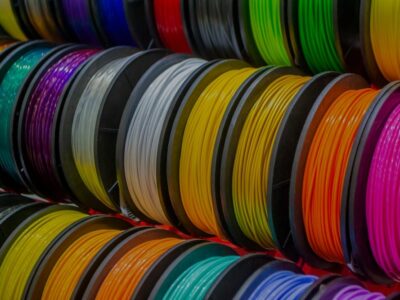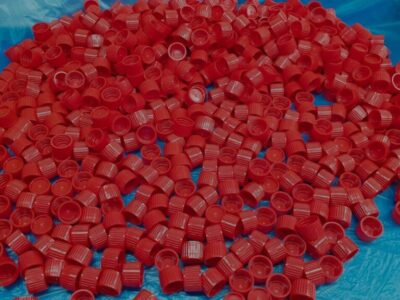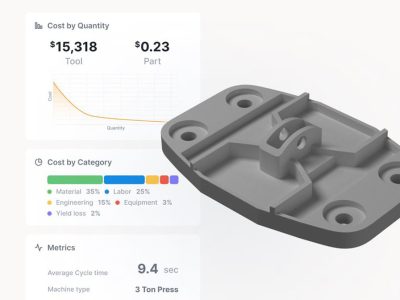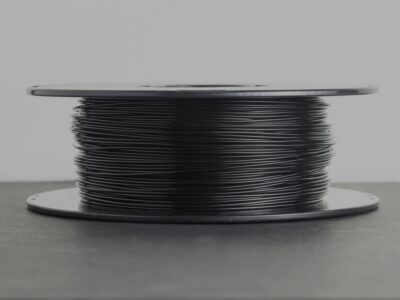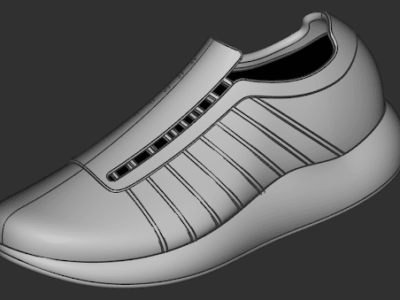Originally published on fastradius.com on January 19, 2022
If you need a durable, high-performing part that can withstand heavy impacts and repetitive use, you’ll want to print with the best of the best materials. But which filament should you use? There are countless materials options available, but each one offers different characteristics and is best-suited for different situations. In this article, we’ll break down the high-strength 3D printing filaments that should be at the top of your list.
We’ll look at 3D printer material strength through the lens of its tensile strength, or the maximum load a material can support without breaking while being stretched. We may also refer to elongation at break, which indicates how much the filament can stretch before breaking and gives insight into impact resistance.
Top 3 high-strength 3D printing filaments
1. Polycarbonate
Polycarbonate (PC) is a wear- and tear-resistant 3D printing material that can maintain its toughness in temperatures as high as 140°C and as low as -20°C. Many product teams use polycarbonate as an engineering plastic due to its good electrical properties, high impact strength, dimensional stability, light weight, non-conductivity, resistance to diluted acids, and flexibility.
When it comes to 3D printing material tensile strength, polycarbonate is hard to beat. It has a tensile strength of 9,800 pounds per square inch (PSI), and a printed polycarbonate hook can support up to 685 pounds of weight. Polycarbonate also has a high impact strength and is used in everything from bullet-proof glass to protective cases for electrical devices to safety helmets. If you need a durable, flexible, non-conductive part with a robust mechanical structure that’s able to withstand high impacts or temperatures, consider using polycarbonate.
2. Nylon
With a tensile strength of 7,000 PSI, nylon is another strong 3D printing material. A nylon hook can only hold 485 pounds, but nylon is easier to print with than polycarbonate. To achieve the best results, ensure your filament is dry and print at a temperature between 220°C and 270°C.
Nylon is prone to mild warping, but its resistance to impact, fatigue, heat, and chemicals make it suitable for most 3D printing applications. It also has a low coefficient of friction, making it ideal for functional moving parts, such as living hinges, snap fits, and gears. Plus, it’s accessible and cost-effective — if you’re working with a smaller budget or building prototypes, you can manufacture a strong final product for less using nylon filament.
3. Acrylonitrile butadiene styrene (ABS)
Acrylonitrile butadiene styrene (ABS) is a terpolymer made of acrylonitrile, butadiene, and styrene polymers. It’s produced via emulsion or continuous mass technique and is resistant to water, heat, and fatigue. It has a tensile strength of 4,100 PSI and is popular in the engineering, technical, and at-home markets. It’s often used in automotive parts, household items, and products that must withstand high levels of mechanical stress.
Not only is this impact-resistant engineering thermoplastic cost-effective and accessible, but it’s also durable, so it’s not surprising that many manufacturers 3D print high-functioning parts with ABS. With its smooth finish, ABS is also an ideal material for end-use components. Plus, sanding, finishing, or painting ABS is easy.
Composite materials
In addition to printing with the aforementioned filaments, you can use composite materials — those containing a mixture of two more materials — to increase the strength of your final part. Composites often contain fibers held together by a binding matrix that makes them incredibly strong and durable while remaining relatively light. As a result, many product teams turn to carbon fiber-infused or glass-infused materials when lightweighting parts.
In general, composite materials are stronger than their base materials or offer other benefits, such as increased resistance, flexibility, or durability. For example, a part printed with nylon filament mixed with carbon fiber or fiberglass will be more resistant than one printed with non-composite nylon filament. The tradeoff is that composites are typically more expensive and require high printing temperatures.
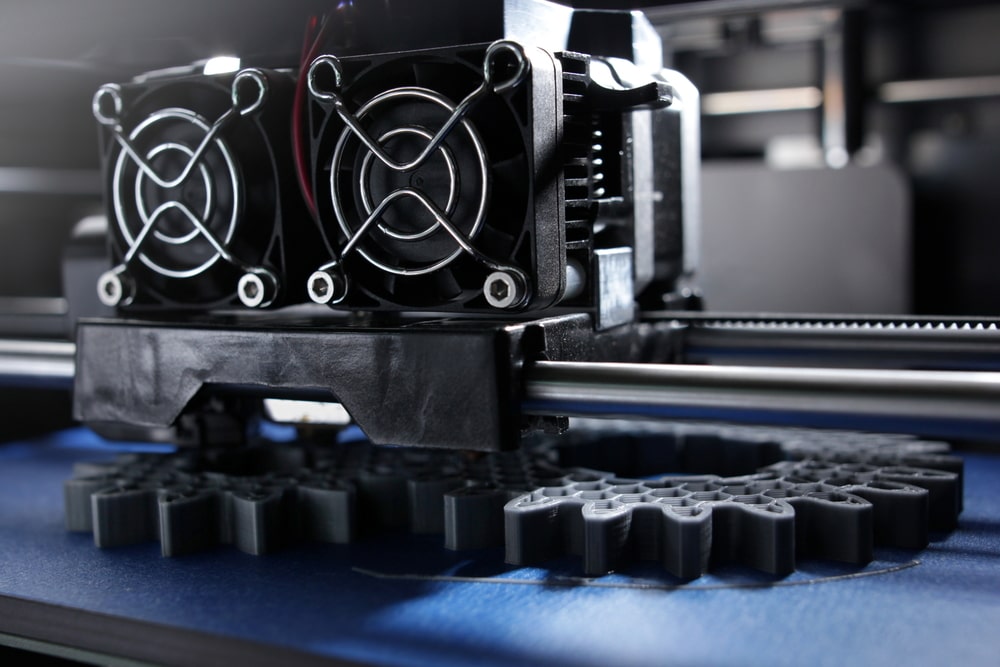
There are countless material combinations available when it comes to composites, so you can find the perfect composite material for your project’s specific requirements. Double-check the physical, chemical, and mechanical compatibility of the prospective materials in your composite to make sure there are no conflicts.
Selecting the right 3D printing filament with SyBridge
Polycarbonate, nylon, and ABS are great material options for creating strong 3D printed parts. However, choosing the right material is just one aspect of creating a strong finished product. The strength of 3D printed materials is also affected by your design, post-processing steps, or printer settings.
When you partner with an experienced manufacturer like SyBridge, our team of experts will guide you through the material selection process, helping you find the best material for the best price based on your project’s needs. Also, we’ll help you optimize your part design for strength and manufacturability. Contact us today to get started on your next project.
